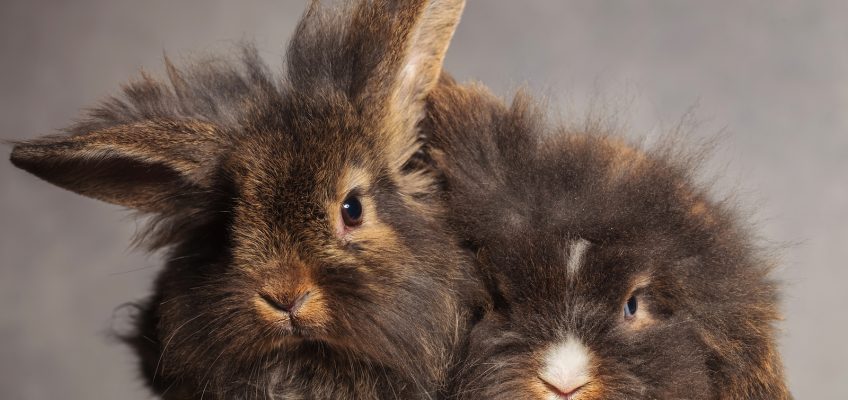We discover the world of bunny sporting activities and finds that rabbit owners are enjoying a life of fun and sports with their beloved pets
Elle-May Michael knows there’s more to being a bunny parent than supplying carrots and grass. ObiWan, one of her house bunnies, has learnt to respond to commands such as “up” (he jumps up onto something), “spin” (he spins around in circles) and “around” (he runs around her legs). Elle-May taught ObiWan using a simple clicker trainer and rewards. “He picked it all up pretty quickly (mostly spin) and even though we did most of the training a few years ago, he still remembers it,” she says.
ObiWan, a rescue bunny, has his own blog and Elle-May keeps him in her home full-time without an enclosure.
“[Bunnies are] too smart and sensitive for caged life,” she says.
Indeed, there’s a whole world out there of rabbit parents enjoying a variety of sports and training opportunities with their bunnies. Gregory Golinski, marketing coordinator for Love That Pet (lovethatpet.com) says, “Some of our clients own rabbits and love to practise sports with them.” He says the sports include rabbit agility, which is very similar to dog and cat agility, but with smaller equipment. “The rabbit that completes the race without bumping into equipment and with the fastest time wins the event. You only need to purchase a leash and harness and join a rabbit agility group or club,” he says.
Rabbit jumping, which is similar to horse jumping, is another sport Gregory mentions.
“The goal for the rabbits is to jump as far and high above the obstacles as possible. Again, purchasing a leash and harness is necessary, and you can join competitions, which are especially popular in Scandinavian countries, the UK and Germany.”
Exotics veterinarian Dr David Vella agrees rabbits can be taught various forms of agility training. “This may involve actual agility courses (with different obstacles, jumps etc) or a course that involves jumps only. The latter form of agility is often done on-leash,” he says.
Dr David says the best way to get involved is to join a club. “These sports are relatively new in Australia and are considered more popular in the UK and Northern European countries.”
NSW Northern Beaches-based vet Dr James Crowley says rabbit agility is usually done off-leash on a course. “The rabbit needs to navigate their way through the course; going over, under, around or through the obstacles. Rabbit hopping/jump/jumping is one or a series of jumps that the rabbit hops over. The rabbit is kept on-leash for these events and is encouraged to jump far and high.
“Start by getting your rabbit used to wearing a harness. Then place small obstacles in front of the rabbit such as a rolled small towel with food on the other side as a reward. Slowly increase the size and height of the obstacles. You can manufacture small jumps with a thin wooden bar as the obstacle. Again, start small,” he says. Dr James says it’s important to not force play sessions on your rabbit as they can tire quickly. “Never force your rabbit over a jump. Not every rabbit will be a jumper and don’t exercise in the heat of the day. It’s [also] best to start training with a young rabbit,” he adds.
Rabbit soccer is also a hit. “Rabbits love to play with balls, so it’s no surprise that some rabbit enthusiasts organise mini soccer matches with their rabbits. They throw the ball, and the rabbits push it around to score. To start playing rabbit soccer, you need to buy a little ball and miniature goal posts,” Gregory explains.
Dr James agrees there are numerous activities you can engage your pet rabbit in. “The activities tend to harness the natural abilities and tendencies of rabbits. Cardboard boxes make great toys for rabbits. They love to chew through them and navigate through holes cut out in the shape of doorways.”
He adds: “Stuff hay and other green foodstuffs into toilet-paper rolls or similar. These can keep your rabbit occupied when left unattended.”
Simply taking your rabbit for a walk or jog is also gaining popularity. “Some rabbits can be walked on a leash if they learn to do it at a young age. It’s possible for their owners to walk with them for a relatively long distance or even have a mini jog with them. Purchasing a good-quality leash and harness is necessary, obviously. You should also be careful that other animals don’t try to attack your rabbit,” Gregory says.
Of course, rabbit safety should be front of mind when embarking on any new adventure with your pet bunny. “Begin with teaching your rabbit when it is young, if possible,” Dr David suggests. “Be careful not to overdo it or over-exert your rabbit during the teaching and performing process. Give your rabbit breaks and don’t force your rabbit to jump if it seems reluctant. Keeping your rabbit in good body condition is vital. This is best carried out by offering the correct diet (lots of hay).
“It is very important to avoid agility exercises in hot weather. Rabbits are vulnerable to heat stress and should not be exercised in these conditions. If your rabbit appears to have a limp, then a visit to the vet may be necessary.”
Written by Danielle Chenery
Originally in Pets Issue 66


Leave a Reply